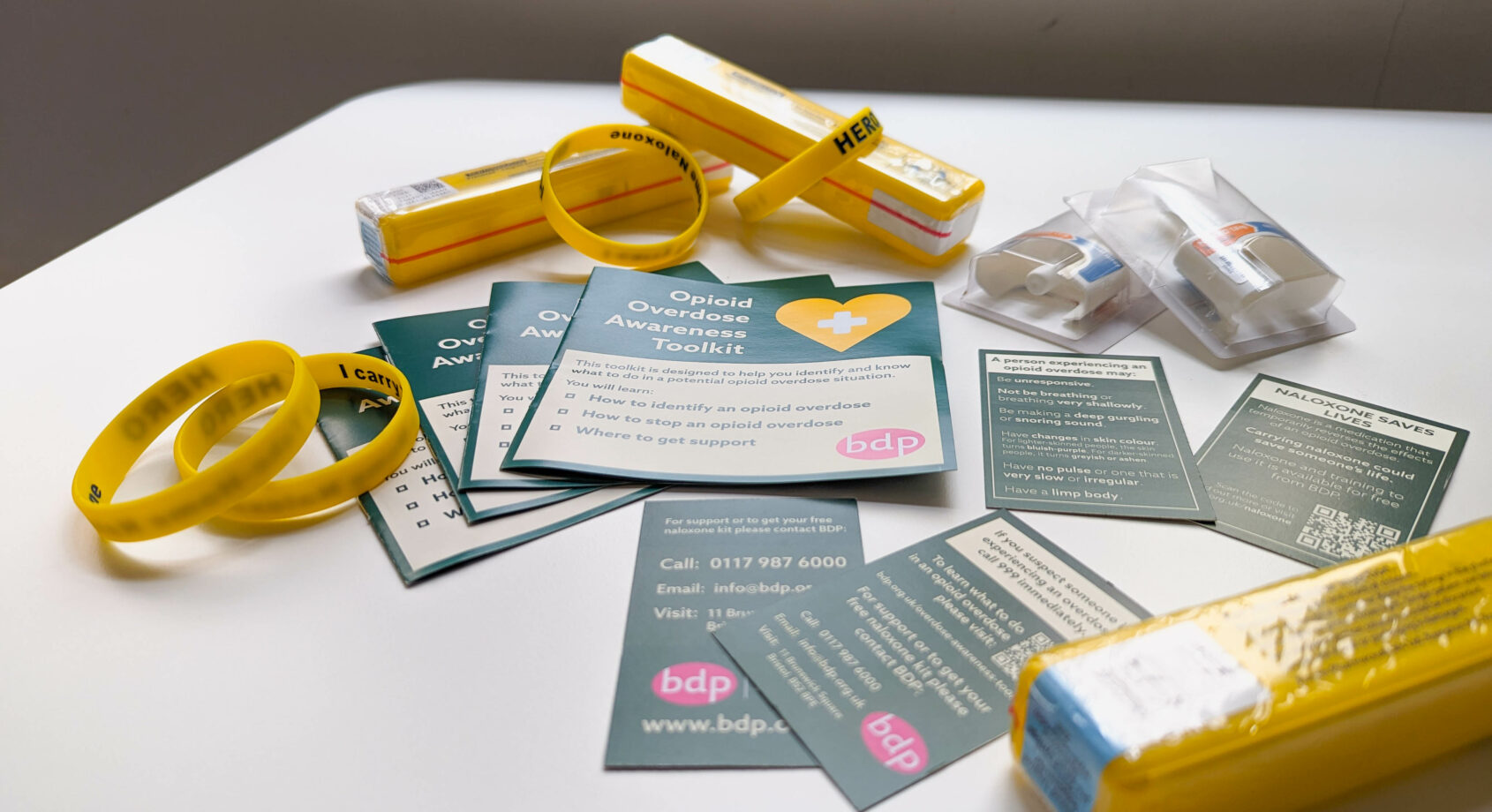
Overdose Awareness Toolkit

Overdose Awareness Toolkit
This toolkit is designed to help you identify and know what to do in a potential opioid overdose situation.
You will learn:
How to spot an overdose
What is an opioid overdose
What to do in an opioid overdose
Naloxone
How to lower the chances of an opioid overdose
Where to get support
How to spot an opioid overdose
A person experiencing an opioid overdose may:
- Be unresponsive
- Not be breathing or will be breathing very shallowly.
- Have changes in skin colour. For lighter-skinned people, the skin turns bluish-purple. For darker-skinned people, it turns greyish or ashen.
- Have a limp body.
- Be making a deep gurgling or snoring sound.
- Have no pulse or one that is very slow or irregular.
What is an opioid overdose?
Opioid drugs depress a person’s central nervous system, including the parts of the brain that control breathing and heart rate.
An opioid overdose is when an individual has taken a quantity of an opioid drug that causes their breathing and heart rate to slow to the point they can no longer support life.
Factors that increase the risk of an opioid overdose include:
- Using opioids with other drugs that depress respiratory function, including alcohol, benzodiazepines and other pain medications.
- Starting to use opioids after a period of abstinence or reduced use.
- Using alone.
- Injecting.
What to do in an opioid overdose
If you suspect someone is experiencing an opioid overdose, dial 999 for an ambulance immediately. The police will not be called, and you won’t get in trouble.
Try to keep the person awake by speaking loudly to them and trying to rouse them.
If you have naloxone, administer it now (more info further down the page).
If the person is not breathing, start chest compressions.
If there is no change in the person’s breathing and the ambulance hasn’t arrived after 2 minutes, administer more naloxone and continue chest compressions. Repeat until breathing normally or ambulance has arrived.
Let the Paramedics know that you have administered naloxone, how many doses and how long ago.
Be mindful that the naloxone might wear off before the effects of the opioid wear off, so the person may go back into overdose if not assessed by a medic.
Naloxone
Naloxone is a medication that temporarily reverses the effects of an opioid overdose. It comes in various forms, but the most common are injectable pre-filled syringes and nasal spray. Both work in the same way, just with different methods of administration.
Injectable naloxone (Prenoxad)
Prenoxad is naloxone in prefilled syringes supplied in a kit with two needles and instructions.
To use Prenoxad:
- Open package by twisting plastic packaging.
- Find instruction document from inside plastic case.
- Follow the instructions to assemble syringe and deliver dose into the outside of the thigh where a trouser seam would be.
- If unresponsive after two to three minutes, administer another dose.
Nasal naloxone spray (Nyxoid)
Nyxoid is naloxone that is administered via a nasal spray. Nyxoid comes in an applicator unit that is sprayed into the nostril.
To use Nyxoid:
- Open Nyxoid box and remove a unit.
- Read instructions on back of Nyxoid unit packaging.
- Remove Nyxoid unit from packaging.
- Spray into one nostril.
- If unresponsive after two to three minutes, spray another dose into the other nostril.
Accessing naloxone
Both types of naloxone are available for free from BDP for anyone who may come into close contact with someone who is experiencing an opioid overdose. For more information and to book our free naloxone training sessions, please visit https://www.bdp.org.uk/naloxone/
How to lower the risks of an opioid overdose
Thankfully, opioid overdoses are largely preventable. Follow these tips to reduce the potential harms from an opioid overdose.
- Try not to use on your own. If you have to, make arrangements for people to check in on you afterwards.
- Don’t use with other drugs that can affect your breathing, like benzos, pregabalin and alcohol, as they can greatly increase the risk of overdose.
- Go slow – Start with a small amount even if you have picked up from a reliable source.
- Consider smoking rather than injecting but be aware that you can still go over from smoking.
- Being on Opioid Substitution Therapy dramatically lowers the chances of a fatal overdose. Speak to your GP or BDP to get on a script.
- Ensure you always carry naloxone – you could save someone’s life.
Where to get support
BDP provide support for both those who take opioid drugs and those who might come in close contact with someone experiencing an opioid overdose.
Do you take opioids?
BDP can support you to be safer when using, help you to make changes in your use and to stop using if that is your goal.
Speak to your GP about accessing our services or contact us directly via the contact details at the bottom of this page.
Are you likely to come across someone experiencing an opioid overdose?
BDP can provide you with free naloxone training, a free naloxone kit and advice and support.
Book on to free naloxone training via www.bdp.org.uk/naloxone
Contact BDP
Find all of the ways to contact us here – https://www.bdp.org.uk/contact-us/

